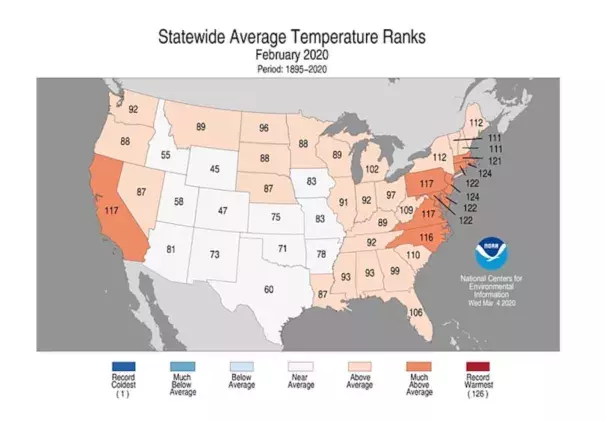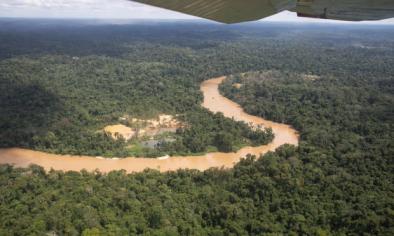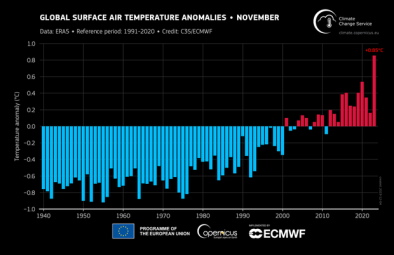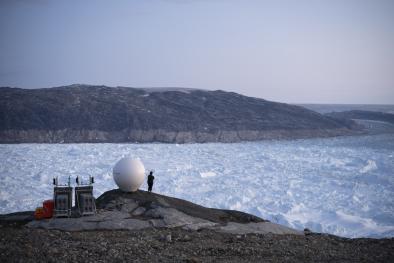February Wraps Up One of Warmest U.S. Winters on Record

Climate Signals Summary: Climate change is increasing temperatures in all seasons, and is leading to shorter and warmer winters, as well as earlier springs.
Article Excerpt: Like the first two months of meteorological winter, February 2020 was milder and wetter than usual nationwide—but it wasn’t quite enough to make this the warmest winter on record for the contiguous United States.
Last month was the 34th warmest in 126 years of recordkeeping for the contiguous 48 states, reported NOAA in its February climate summary. That made meteorological winter (December-February) the sixth warmest on record, despite the fact that we just saw the warmest December-to-January period on record.
...
Even if it wasn’t the nation’s warmest winter on record, there was a marked lack of extreme cold. Very few locations dipped 0°F outside of the locations where you’d most expect it: the mountainous West and the normally frigid parts of the Upper Midwest, Great Lakes, and New England.
In a few locations, including Washington, D.C.; Las Vegas, Nevada; and Raleigh, North Carolina, the lowest temperature of the winter was the highest such value for any winter on record, as shown in the table below. Several others, including Boston, Massachusetts, set or tied their second warmest.
...
February produced far more stark contrast in precipitation than temperature across the contiguous U.S. Most of the South had a top-ten-wettest February, with Georgia ending up with its second wettest on record.
A number of locations from northern Mississippi to eastern Georgia saw their wettest February on record. This includes Tuscaloosa, Alabama, with 15.49” beating 14.79” from February 1961. Tuscaloosa and several other cities in central Alabama are also experiencing their wettest year on record to date.
Meanwhile, it was a bleak month for moisture in California. As the state’s wettest month of the year on average, February is crucial for replenishing California’s snowpack and water storage. But this year was the driest February in state history, and on the heels of less-than-ample moisture earlier in the winter, that bodes ill for the summer to come.
...
The spring flood outlook issued on February 27 by the NOAA/NWS North Central River Forecast Center (NCRFC) includes 103 forecast points with a better-than-even chance of moderate to major flooding.
“As usual, spring precipitation and temperature patterns in the coming weeks to months will determine the snowmelt rate and runoff timing,” the NCRFC said. “Based on current and forecast conditions we expect a high probability of seeing widespread flooding across our area.”
Related Content






